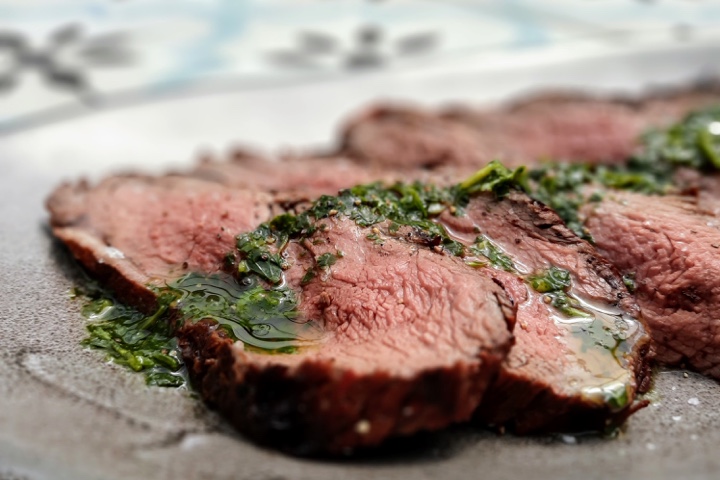As the end of summer approaches, barbecue season is anything but over! Sure – it’s easy to throw a few sausages on the grill and call it a day, but nothing seems to be more satisfying than cutting into the perfect steak.
If the thought of cooking a steak intimidates you, you’re not alone! Luckily, I’ve had the chance to get some tasty tips from five of Taranaki’s most talented chefs who are known for delivering dishes that please even the pickiest of palates. Our culinary experts are:
Social Kitchen – Head Chef Jordan Hull
Meat & Liquor – Head Chef Robert Isbister
Toret Cucina Italiana – Head Chef Victor Lussier Choquette
Table – Head Chef Martin Wojniusz
State Bistro – Head Chef Carl Maunder
Step One: Choose Your Cut
The chefs I interviewed are used to preparing a variety of premium steak cuts but were quick to say that you don’t have to use the most expensive cuts of meat to get the best flavours. Three of the five said their personal preference was a scotch fillet, while the other two would go for a thick, bone-in ribeye. Each chef stressed the importance of quality and looking for good fat marbling. Not only does a fair amount of fat marbling enhance the flavour of the meat, it also creates a juicy, buttery texture.
To take taste and tenderness to the next level, consider buying meat that has been dry aged. Chef Rob from Meat & Liquor explained to me how dry ageing draws out the unneeded water from the meat, creating a lower meat to fat ratio that results in tenderness and bold beef flavour. In New Plymouth, you can find a variety of dry aged steaks at The Kiwi Butcher Shop. If you’re shopping at the supermarket, look for steaks that are darker in colour. The brighter and redder they appear, the less flavoursome they’ll taste.
Step Two: Choose Your Seasoning
If you’ve done a good job of finding a steak that comes from a high-quality source and has a mouth-watering amount of fat marbling, then step two should be simple: flaky sea salt and fresh cracked pepper. Chef Carl from State Bistro said, “For me, adding more seasoning doesn’t bring out the flavour of the beef – it just puts other things in there.” Basic seasoning lets the star of the show shine.
Step Three: Choose Your Cooking Method
Whenever I’m thinking about cooking a steak, my mind always goes straight to an outdoor charcoal grill. I really enjoy the smoky taste of meat that has been cooked over fire. But if you don’t have access to outdoor cooking, you can still make an excellent steak.
If you’re cooking inside, you might want to follow the advice of Chef Martin from Table. Start with a hot pan and use a bit of butter to sear the outside. It will help the steak develop a delicious crust.
Chef Victor from Toret says using a cast iron pan makes all the difference. Like Chef Martin, he’ll get his pan hot, put in a pat of butter, and just as it begins to bubble, he places the steak in to sear each side. If your steak is on the thicker side, only keep it on the stove until you have a nice crust on each side and then transfer it into the oven to finish cooking.
Whether cooking in the pan or on the grill, this is the most important thing to remember: don’t overcook the steak! Every chef was adamant that people trust their initial reaction to take their steak off the heat and not second guess that it needs a bit more time. It’s also important to remember to let your meat rest. Chef Jordan from Social Kitchen recommended letting a steak rest for at least five minutes. Resting allows all the flavour-filled liquids to be reabsorbed, ensuring that you get the tastiest, juiciest steak possible.
Step Four: Choose Your Sides
Now that you know how to put a magnificent main on your plate, it’s time to think about something to pair it with and something to sip on. You can never go wrong with a red wine, but another great option is a local Shining Peak lager, such as their Fanny Fantham’s or Octopus Clamp.
The chefs suggested seasonal side items such as beetroot salad, grilled asparagus, or roasted baby kumara with sage butter. And with numerous local farmers growing a wide variety of produce, there are always fresh, delicious options available.
If you’re worried that you need specific instructions for time and temperature, just remember that every person has their own preferences and with a little patience and lots of practice, anyone can find their rhythm in the kitchen.
If you’d rather just leave it to the pros, treat yourself to a succulent picanha steak at Social Kitchen and their house-made gnocchi with blue cheese cream. Relax in the garden at Table while enjoying an eye fillet served with potato dauphinois and shitake mushrooms with sauerkraut. Soak in the Oakura sunshine and fill up on Toret’s angus striploin and eggplant with ricotta and pesto. Head up the stairs to Meat & Liquor and indulge in a dry aged scotch fillet with their incredible spiced carrots. Or head to State Bistro for fun vibes and a delectable bone-in ribeye with their creamy cheddar potato gratin.
And that, my friends, is what’s Tasty in Taranaki!
To explore more tasty things grown, produced, and cooked in Taranaki, go to tastyintaranaki.com and follow Amber’s delicious adventures on @tastyintaranaki
